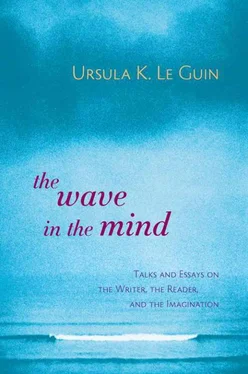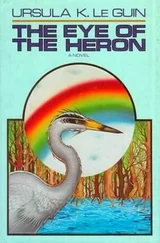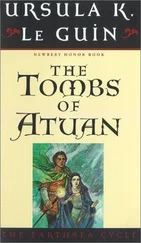(Note: Most of us discovered as children that if you repeat any word aloud, such as the word syllable — syllable syllable syllable syllable syllable —or even your own name, it will begin to sound funny and then become meaningless, having been reduced by repetition to pure sound and rhythm, which is all it “really” is. This is important.)
Poetry and prose differ in the frequency and the regularity of stresses.
Frequency: In poetry, there is often only one unstressed syllable between stressed ones, and seldom more than two (thus: TUM ta TUM, or TUM ta ta TUM, but seldom TUM ta ta ta TUM). Prose often has three or even four unstressed syllables between stressed ones.
In other words, in poetry the intervals are shorter; or, in other other words, in prose the intervals are longer.
If you say more than four unstressed syllables in a row you are likely to find yourself mumbling. That’s what mumbling is.
SYLLables in a ROW—that’s four. SYLLables in an unexPECted ROW—that’s six, and it is so mumbly that in reading it aloud we’re likely to put in a substress, perhaps on the “un” of “unexpected,” to give it a bit of a beat so that it’s easier to say.
Both as readers and as speakers, we want the stresses to occur fairly often, we resist long intervals. We don’t really like mumbling.
Regularity: A regularly repeated pattern of stress/unstress, a regular beat, in language, is called meter . Meter belongs to poetry. To poetry alone.
Within the realm of poetry, free verse does not have meter. But the stress-count of free verse is high, and it sneaks in a lot of semiregular, sort-of-metrical patterns.
Prose does not have meter. Prose scrupulously avoids any noticeable regularity or pattern of stresses. If prose acquires any noticeable meter for more than a sentence or so (just as if it rhymes noticeably), it stops being prose and becomes poetry.
This is the only difference between prose and poetry that I have ever been certain of.
STRESS-RHYTHM IN POETRY: METRICS
English meter in the earliest days was “accentual,” which means people just counted how many stresses per line. The metrical unit in such poetry is the line or the half-line. Each unit has the same number of stresses; but there is no set number of syllables in the line and no set arrangement of stressed and unstressed syllables. Seamus Heaney’s translation of Beowulf reproduces the four-stress line that breaks into two half-lines:
Down to the waves then, dressed in the web
of their chain-mail and warshirts, the young men marched.
By Chaucer’s day, English poets had taken to counting syllables along with stresses, and to thinking of the line as divisible into feet. Some poets still argue that you can’t put English stockings onto Greek or Latin feet, but most find the concept of the metric foot a useful one. All who do agree that the foot that goes the farthest in English has two syllables, the first unstressed, the second stressed: ta TUM—the iamb.
“Te he!” quoth she, and clapt the window to.
That line from Chaucer is iambic pentameter, “five-beat iambic.” English poetry has over the centuries favored this particular meter. (It has been suggested that this may be because five heartbeats relate to a comfortable breathing rate, so that iambic pentameter fits nicely with the living-breathing-speaking voice.)
Metrical poetry has a regular pattern, yet many, many lines of poems in iambic pentameter do not actually go,
Te HE! quoth SHE, and CLAPT the WINdow TO—
ta TUM ta TUM ta TUM ta TUM ta TUM
(or as it’s usually written,

—a dash for the unstressed syllable, a stroke for the stressed syllable, and a slash to separate the feet).
The pattern is endlessly varied by “substituting” feet—a TUM ta here, a ta ta followed by a TUM TUM, an unstressed syllable dropped or added. (All these variant feet have names of their own—trochee, pyrrhic/spondee, anapest.) The innate stresses of the words, manipulated by the syntax, play against the demand of the regular beat, setting up a syncopation, a tension between expectation and act, which is surely one of the essential ploys of art.
Here are three lines of Shakespeare, who was, no question about it, good at this sort of thing:
Thus conscience does make cowards of us all,
And thus the native hue of resolution
Is sicklied o’er with the pale cast of thought.
If you force a pure iambic/ten-syllable line pattern onto these lines you’ll get:
Thus CONscience DOES make COWards OF us ALL
And THUS the NAtive HUE of RESoLOOSHN
Is SICKlied O’ER with THE pale CAST of THOUGHT.
Clearly this won’t do. “Of” and “the” are not stressable words. Besides, we aren’t rocking in a rocker, we’re reading poetry. The natural stress of the words within the sentence, and the syntactical phrases or meaning-groups they fall into, are in active tension with the ideal pattern. They fit it, yet they fight it.
I’d speak the lines more or less this way:
Thus CONscience / does make COWards / of us ALL,/
And THUS / the NAtive HUE / of REsoLUtion/
Is SICKlied O’ER / with the PALE CAST / of THOUGHT./
This puts only three stress-beats in the first line, with three unstressed syllables in a row. The second line is regular except for its extra final syllable. The third uses the two-foot variation of two unstressed followed by two stressed syllables.
The poetic heart never follows the metronome. The rhythm of these lines is complex, subtle, and powerful, and that power comes from its syncopation with the ideal or underlying regular pattern.
The first of these lines also demonstrates why the idea of the foot will always be problematic in English. My scanning of it above would give:

that is, five feet, iambics alternating with pyrrhics; but reading it as I would speak it aloud, I scan it into three elements or phrases that are not usefully describable as feet at all:

So I introduce here the idea of “bars.” When I scan either poetry or prose by reading it aloud and listening for the beats, I find it falls into short syntactical groups, which I call bars. I mark them with a vertical slash: |. The intervals between bars may be very slight, or even imperceptible if one is reading or speaking very fluently, but I think they exist; I think they clarify both the thought and the emotion, and are as essential to the rhythm of the poetic line or sentence as stress is. But I’m not certain anybody else would agree with me, or would mark off the bars as I do, so I simply mention it, and hope someone, sometime, who knows more about the subject will tell me what they know.
The line is a vexed subject in modern poetry. Many poets argue for reading poetry aloud without any pause at all at the end of lines. But it seems to me the line is part of the pattern, the rhythm, of the poem. In reading free verse, if the voice gives no indication, however slight, of the line end, the hearer cannot know where it is. This reduces the lines to mere typography. The regularity of metrical verse may signal the ear where a line ends, but still it needs some support from the voice. Speaking Shakespeare is a constant compromise between the natural run-on of the voice in dialogue and the beat of the pentameter lines that underlies it. If in search of natural tone the actor completely ignores the lines, the poetry is being read as prose.
Читать дальше






